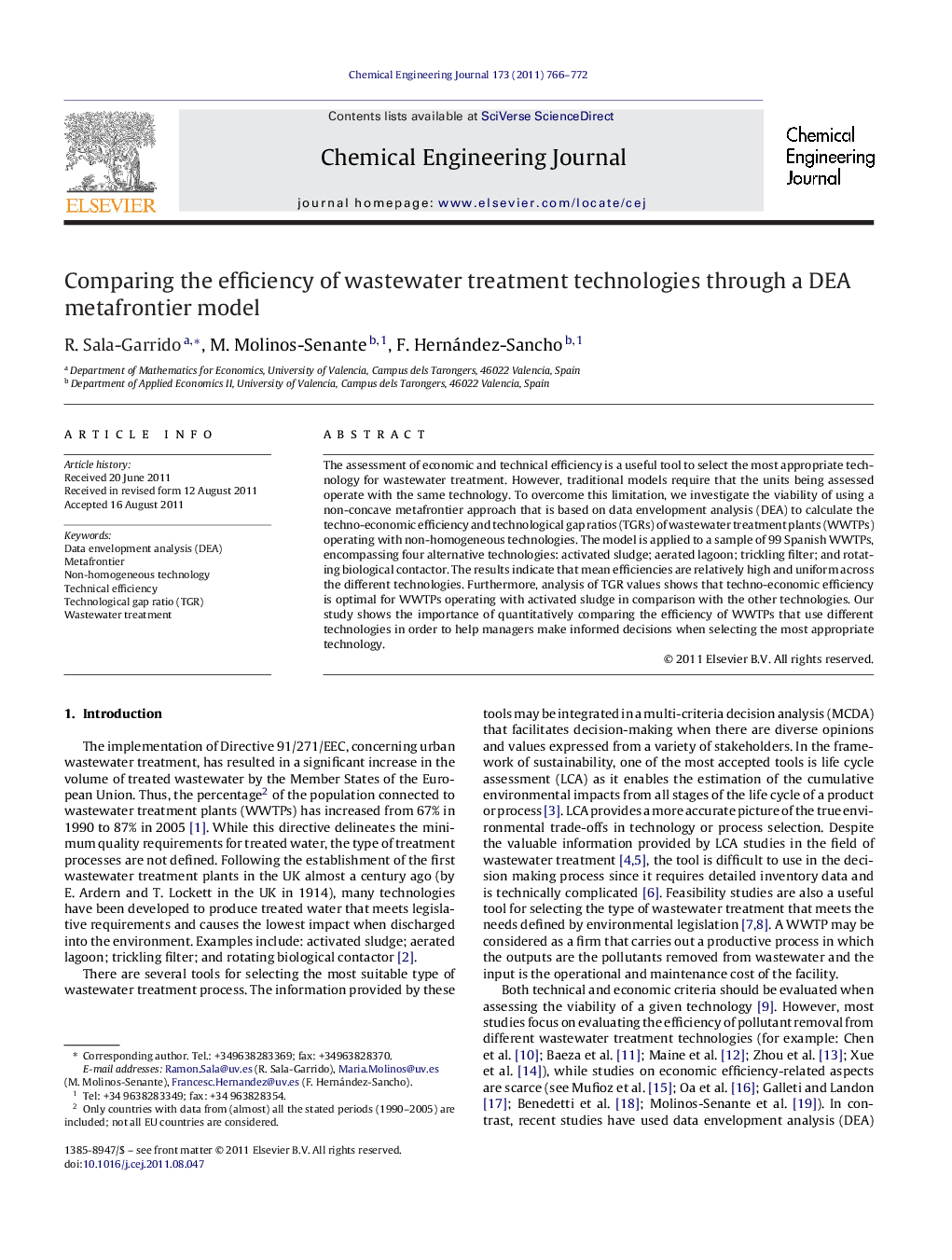| Article ID | Journal | Published Year | Pages | File Type |
|---|---|---|---|---|
| 150574 | Chemical Engineering Journal | 2011 | 7 Pages |
The assessment of economic and technical efficiency is a useful tool to select the most appropriate technology for wastewater treatment. However, traditional models require that the units being assessed operate with the same technology. To overcome this limitation, we investigate the viability of using a non-concave metafrontier approach that is based on data envelopment analysis (DEA) to calculate the techno-economic efficiency and technological gap ratios (TGRs) of wastewater treatment plants (WWTPs) operating with non-homogeneous technologies. The model is applied to a sample of 99 Spanish WWTPs, encompassing four alternative technologies: activated sludge; aerated lagoon; trickling filter; and rotating biological contactor. The results indicate that mean efficiencies are relatively high and uniform across the different technologies. Furthermore, analysis of TGR values shows that techno-economic efficiency is optimal for WWTPs operating with activated sludge in comparison with the other technologies. Our study shows the importance of quantitatively comparing the efficiency of WWTPs that use different technologies in order to help managers make informed decisions when selecting the most appropriate technology.
► Data envelopment analysis metafrontier methodology to compare the efficiency of wastewater treatment technologies. ► Metafrontier as an umbrella of all possible frontiers that may arise as a result of hererogeneity between firms. ► Techno-economical efficiency respect to each technology frontier and respect to metafrontier. ► Efficiency assessment as a tool for selecting the most appropriate technology for wastewater treatment. ► Technological gap ratio as an indicator of the maximum output possible production from a given input.
